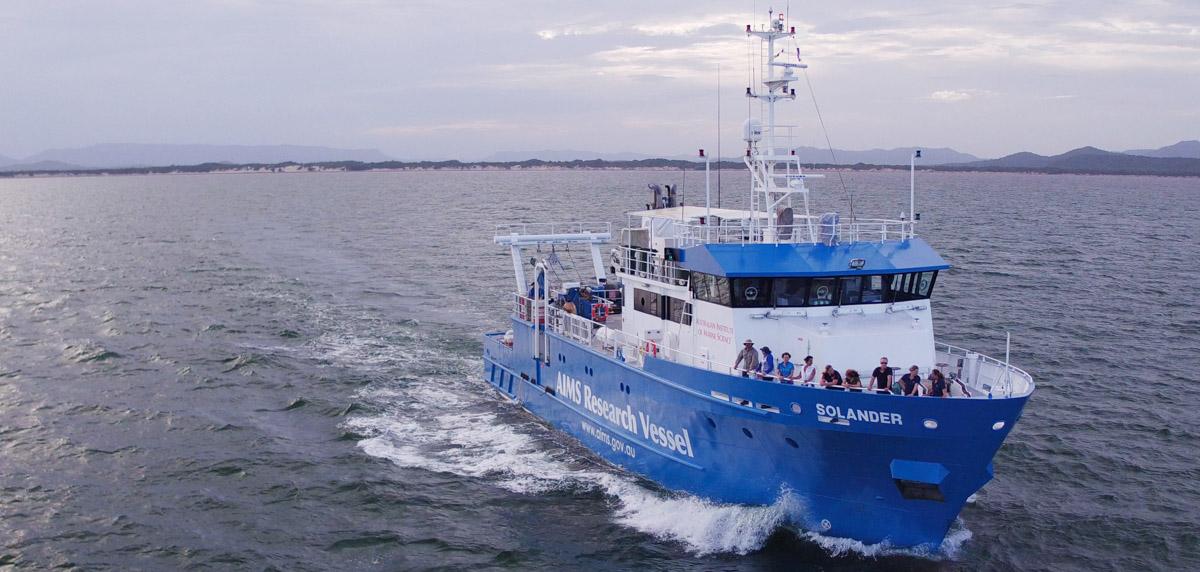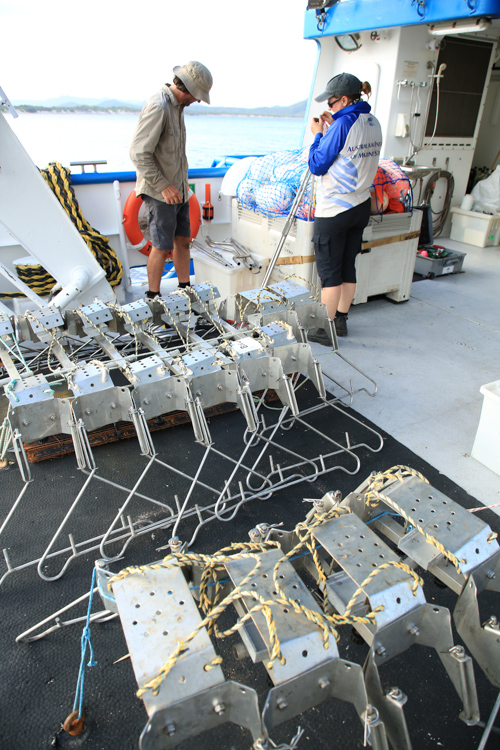The largest research vessel in the Australian Institute of Marine Science’ fleet is in Queensland waters for the first time, to help scientists conduct a 25-day health check of remote far northern reefs.
AIMS CEO Dr Paul Hardisty said he had mobilised the vessel, to bring the science to the field to help better understand and support the national icon, which generates an estimated $6 billion for Australia and 64,000 jobs.
“It is the first time our 34.9m West Australian-based RV Solander, with its specialised laboratories, flow-through aquariums, and high-tech computing and diving facilities for the 18 AIMS scientists and crew onboard, has visited Queensland waters,” Dr Hardisty said.
He said as well as monitoring for potential bleaching, AIMS researchers were looking to see if surviving corals from previous bleaching events had developed increased tolerance to warmer waters, a good indication of the resilience of a reef.
AIMS Long-Term Monitoring Program acting manager Dr Mike Emslie said the expedition was part of AIMS’ commitment to survey the health of the Great Barrier Reef including the far northern region, as it has done every two years for the past 35 years.
“We intend to survey more than 20 remote reefs off Cape York to observe their condition, and check for signs of recovery in young coral recruits, after the 2016 and 2017 coral bleaching.”
“Our team last surveyed these remote reefs in late 2016, after a severe coral bleaching event affected this region.”
AIMS Healthy and Resilient Great Barrier Reef program director Dr Britta Schaffelke said the Institute’s marine researchers were monitoring reefs from Cooktown, to Princess Charlotte Bay and reefs around Cape Grenville.
“This long-term, large scale monitoring we are undertaking, gives our researchers an unparalleled understanding of the condition of coastal and offshore coral reef ecosystems and their ability to recover after being disturbed,” Dr Schaffelke said.
“While we are there, we will also collect data on other health indicators such as coral disease, coral predators such as crown-of-thorns-starfish, we will monitor reef structure through 3D image capture, and we have baited underwater cameras and divers to check on fish numbers and diversity.
“Detailed information about coral and fish communities for this region are scarce, so this is a valuable opportunity to obtain information from this region.”
Dr Schaffelke said the researchers were looking closely at surviving corals to see if they had increased tolerance to warmer waters, a good indication of the resilience of a reef.
“Identifying the genes responsible for heat tolerance in corals will help us better manage reefs of the future by identifying key populations to protect key reefs, to ensure reef resilience, and to also identify potential brood stock for use in reef restoration activities.
“While the situation has eased, there is still a potential for warm sea temperatures to cause coral bleaching on the Great Barrier Reef this year.”
As part of AIMS’ close ties with Traditional Owners, a Sea Ranger from the Cape York region is on board the RV Solander to advise on traditional knowledge of the area and is helping build closer monitoring partnerships for the future.
The expedition, which started in Cooktown on January 4, and finishes on January 29, is the first project to be supported with funding from the Great Barrier Reef Foundation’s Reef Trust Partnership.
Other stakeholders include the National Environmental Science Program (NESP), which has funded a project onboard, with AIMS partners such as Great Barrier Reef Marine Park Authority utilising the long-term monitoring information gathered.
You may also be interested in...
- Where is the RV Solander now? Track the expedition using our vessel tracker
- AIMS Long-Term Monitoring Program reports are available by email. Subscribe here
- Reef Health updates for summer 2018/19 are available at the Great Barrier Reef Marine Park Authority website


